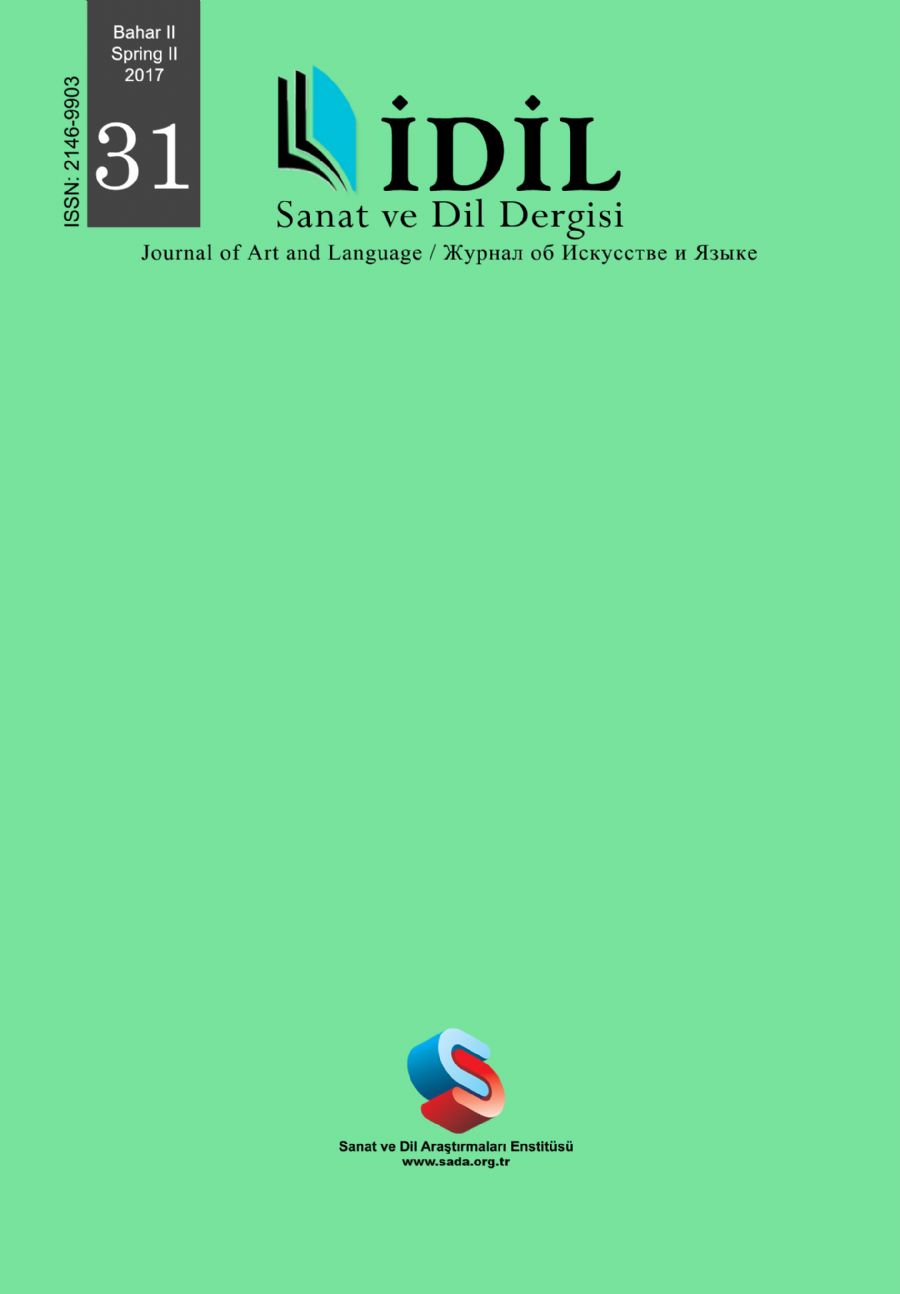KARACAKILAVUZ DOKUMALARININ GÜNÜMÜZ TEKSTİLİNE UYARLANMASI
KARACAKILAVUZ WEAVINGS ADOPTATION TO TODAY’S TEXTILE
Author(s): Dilber Yildiz, Esin SarıoğluSubject(s): Customs / Folklore, Visual Arts, Sociology of Art
Published by: Sanat ve Dil Araştırmaları Enstitüsü
Keywords: Art; Weaving; Culture; Patterns; Textile; Fashion Design;
Summary/Abstract: The art of weaving takes a significant role in Turkish traditional arts. Weaving, which originated in Egypt, has kept on being developed in Mesopotamia, Central Asia and the Balkans. It has been one of the arts moved to our age via rich motif patterns, weaving techniques, color and composition features. In this study, the features of Karacakılavuz Weaving, the pattern work with traditional patterns ( koçboynuzu/ cleat, elibelinde /akimbo, bereket/ abundance, köpekayağı/ dogfeet, bukağımotifi/ gyvepattern, döşemesuyu/tiling, yıldız/star), the weaving examples from Karacakılavuz (prayer rugs, friezes, decorative works, living-room works, foulards, vests, saddlebags, tableware), andKaracakılavuz weaving craftspeople are researched. It is widely known that especially the women in Karacakılavuz town keep the hand weaving alive, as weaving maintains its important place in the history of textile. The women weave rush mats, rugs, cacala, prayer rugs for flooring and bags for carrying stuff. In this way, they are able to make use of their spare time and also participate in breadwinning. These weavings in Karacakılavuz display the cultural structure of the inhabitants and also reflect the emotions, attitudes, desires and expectations that they can not explicitly tell. By using this kind of researches, it is vitally important to introduce, document, use and apply these crafts in order to protect the traditional and regional weavings, which are sinking into oblivion already, by adapting them into the today's textile and fashion; to build a cultural bridge between past and future; to prevent the traditional crafts and patterns from disappearing. Utilizing Karacakılavuz Weaving in the art works and today's textiles are explained and also the art practice is included in the studies.
Journal: İdil Sanat ve Dil Dergisi
- Issue Year: 6/2017
- Issue No: 31
- Page Range: 1089-1110
- Page Count: 22
- Language: Turkish

